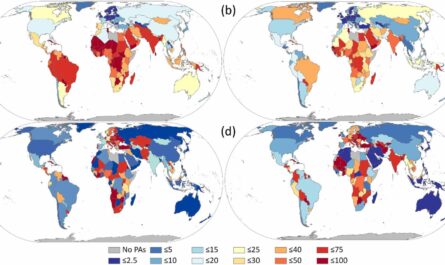A team of researchers from Zhejiang University led by Professor Yi Sun has made a significant discovery in Treg cells that could have implications for the treatment of autoimmune diseases. The researchers found a functional compensatory effect between two axes of the neddylation-Cullin-RING ligases (CRLs) system in Treg cells, which play a crucial role in maintaining immune homeostasis. The study sheds light on the mechanisms underlying autoimmune diseases and could lead to new avenues for prevention and treatment.
Protein neddylation is a type of modification that activates CRLs, a family of E3 ubiquitin ligases that regulate important biological processes. The neddylation process involves an enzymatic cascade carried out by an E1-E2-E3 complex. Mammalian cells have one neddylation E1, two E2s (Ube2m and Ube2f), and multiple E3s. The team focused on the Ube2m-Rbx1 and Ube2f-Sag axes, which are essential for the functions of Treg cells.
Previous studies by the team had shown that the loss of either Rbx1 or Sag led to embryonic death in mice, demonstrating the non-redundancy of these two family members. However, the researchers discovered that UBE2M, which is part of the Ube2m-Rbx1 axis, also acts as an E2 for another E3 called Parkin-DJ-1. This suggested potential cross-talk between the Ube2m-Rbx1 and Ube2f-Sag axes.
Treg cells are a type of immunosuppressive CD4+ T lymphocytes that play a crucial role in immune homeostasis. In the study, the researchers used conditional knockout mouse models to investigate the functional complementarity between the Ube2m-Rbx1 and Ube2f-Sag axes in Treg cells. The double knockout of both E2s (Ube2M and Ube2F) in Treg cells resulted in robust inflammatory phenotypes and significantly reduced survival. This indicated that Ube2f plays a role in Treg cell function but is fully compensated by Ube2m.
Similarly, the double knockout of both E3s (Rbx1 and Sag) in Treg cells led to severe inflammatory phenotypes and early-onset fatality. However, a comparison of phenotypes between the double knockout and single Rbx1 knockout showed similar outcomes, suggesting that Sag also regulates Treg cell function to some extent but is fully compensated by Rbx1.
Further analysis of transcriptome changes revealed that the inflammation-related pathways were altered to a greater degree in the double knockout mice compared to the single knockout mice. This suggests that the Ube2m-Rbx1 axis and the Rbx1/Sag-CRLs system have functions beyond neddylation-dependent mechanisms in Treg cells.
The findings of this study have important implications for autoimmune diseases, as abnormalities in CRLs and enhanced cullin neddylation are associated with conditions such as systemic lupus erythematosus, inflammatory bowel disease, and rheumatoid arthritis. By understanding the compensatory effects in Treg cells, researchers may be able to develop new strategies for the prevention and treatment of these diseases.
In conclusion, this study reveals the functional compensatory effects between the Ube2m-Rbx1 and Ube2f-Sag axes in Treg cells and provides new insights into the regulatory mechanisms of the neddylation-CRLs system. The findings contribute to our understanding of autoimmune diseases and offer potential therapeutic targets for future research.
*Note:
1. Source: Coherent Market Insights, Public sources, Desk research
2. We have leveraged AI tools to mine information and compile it



